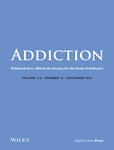Research demonstrates that siblings, especially older siblings, make unique contributions to adolescents' substance use above and beyond shared genetics and shared parenting. Older siblings' influences on younger adolescent siblings' alcohol use operate through both direct and indirect pathways. Using three waves of longitudinal data, the present study tested an integrated model of sibling influence processes focused on the linkages between older adolescent siblings' earlier alcohol use and younger adolescent siblings' later alcohol use.
Longitudinal study using data collected from families on three occasions: Time 1 (March 2019–February 2020), Time 2 (July 2020–February 2021) and Time 3 (November 2021–February 2022) via online surveys.
Families resided in five midwestern states in the US (Illinois, Indiana, Ohio, Pennsylvania and Wisconsin).
Participants included two adolescent-aged siblings and one parent from 682 families (n = 2046 persons).
Alcohol use by adolescents and parents was assessed at Time 1; younger siblings' social alcohol expectancies and perceptions of modeling were measured at Time 2; and younger siblings' alcohol use was measured at Time 3.
Older siblings' earlier alcohol use predicted younger siblings' later drinking both directly [b = 0.15, standard error (SE) = 0.04, β = 0.17, P < 0.001] and indirectly through younger siblings' social alcohol expectancies [δ = 0.02, SE = 0.008, 95% confidence interval (CI) = 0.003, 0.03]. The direct (δ = −0.14, SE = 0.07, 95% CI = −0.27, −0.01) and indirect (δ = 0.03, SE = 0.02, 95% CI = 0.0001, 0.06) links were further moderated by younger siblings' reports of sibling modeling, but not by gender composition of the sibling dyad or the interaction of modeling and gender composition.
Older siblings' alcohol use appears to influence younger siblings' later alcohol use directly, as well as indirectly through younger siblings' expectancies about alcohol. The global context of the sibling relationship, in this case sibling modeling, may further amplify or dampen these pathways of influence.


